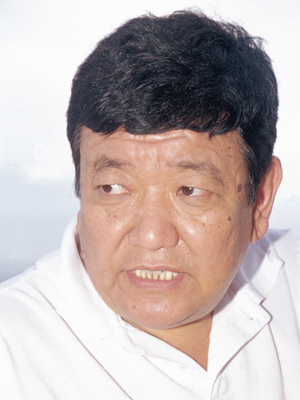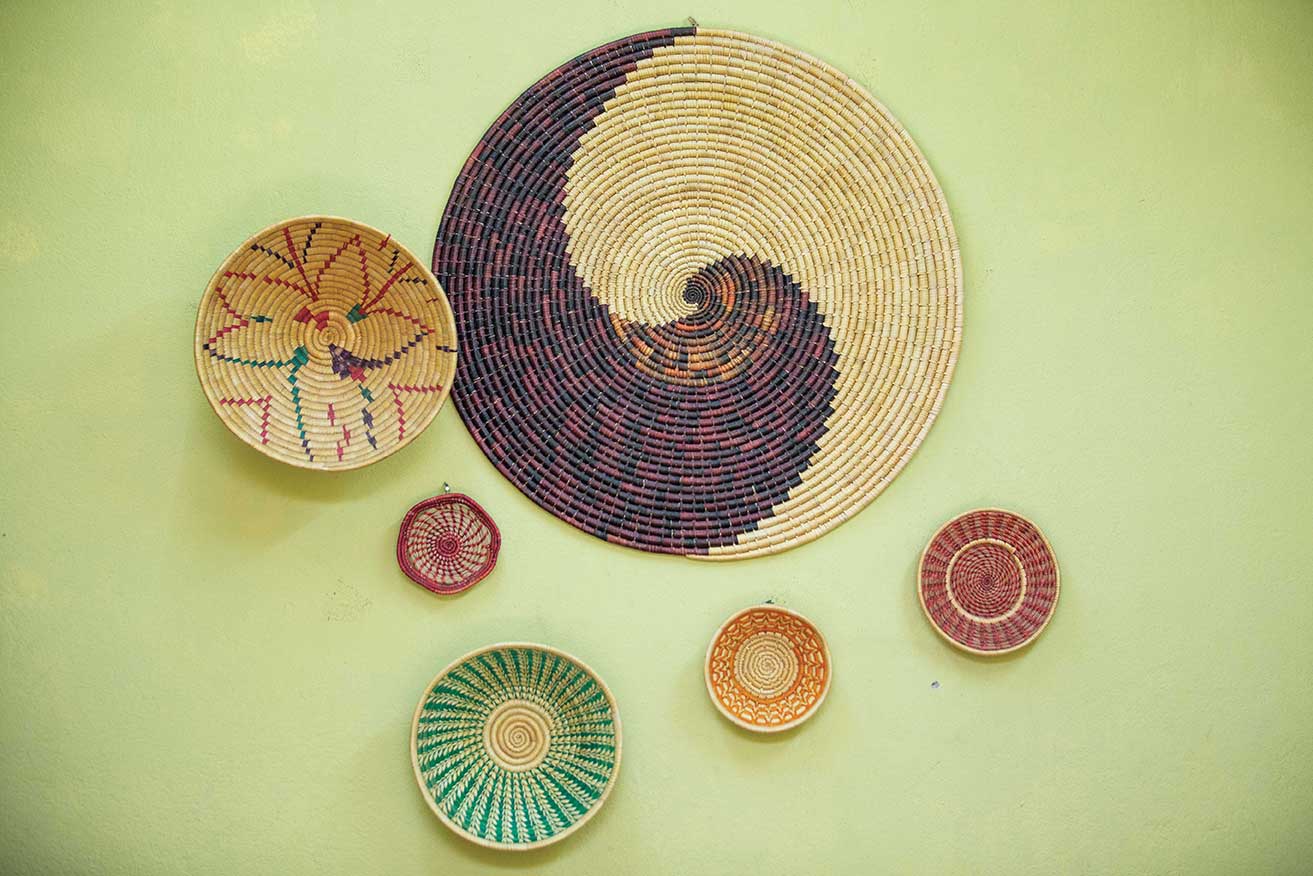We were all gathered at Tilganga at eleven in the morning, after which we headed off to Phullahari Gumba, Kapan where the eye camp was being organized. It was April 24th 2004, and my first visit to the annual eye camp conducted by a surgical team of Tilganga Eye Center (TEC). The centre has been organizing this camp at Kapan for the last three years. TEC works towards the needs of cataract blind in developing nations by providing high quality affordable intraocular lenses for use in modern cataract surgery through the Surgical Training Center (Surgicentre), the Fred Hollows IOL Laboratory and Nepal Eye Bank. TEC is the implementing body of Nepal Eye Program, a non-profit, community-based non-governmental organization that is committed to providing quality ophthalmic care to the people of Nepal and adjoining nations.
 Dr. Sanduk Ruit, Medical Director of Tilganga Eye Center along with five other doctors at the camp is working for a noble cause. Approximately 200 cataract surgeries were to be done that day and it was all for free. The camp was crowded as patients had come from all surrounding villages but nevertheless the volunteers had managed to keep everything organized and clean. As soon as I entered the camp, I was given a mask to cover my mouth and a pair of white plastic bags to cover my shoes. The nurses were at work in the anesthesia room while the doctors were busy in the Operation Theater. Luckily, I was allowed to enter the operation theater where I witnessed Dr. Ruit himself conducting a Cataract surgery.
Dr. Sanduk Ruit, Medical Director of Tilganga Eye Center along with five other doctors at the camp is working for a noble cause. Approximately 200 cataract surgeries were to be done that day and it was all for free. The camp was crowded as patients had come from all surrounding villages but nevertheless the volunteers had managed to keep everything organized and clean. As soon as I entered the camp, I was given a mask to cover my mouth and a pair of white plastic bags to cover my shoes. The nurses were at work in the anesthesia room while the doctors were busy in the Operation Theater. Luckily, I was allowed to enter the operation theater where I witnessed Dr. Ruit himself conducting a Cataract surgery.
Though he was tired after having operated on 40 patients, Dr Ruit agreed to meet me around 2pm for an interview. If I had to describe Dr. Ruit in one sentence – he is a perfect balance between a family man and a professional, soft-spoken and extremely hard working. He was awarded the Gorkha Dashin Bahu 4th Class.
- VP: Could you brief us about your childhood days and educational background?
Ruit: I am originally from the far northeastern part of Nepal. I spent my childhood days in a small village called Olanchung Gola. This village did not have a single primary school at that time. I had to walk for about eleven days to finally get to Darjeeling where I joined St. Robert’s School. After having studied there for a few years I came back to Kathmandu and completed my schooling from Siddharth Banasthali. Luckily when I was doing my Intermediate in Science from Trichandra College, I got selected to go to Lucknow to pursue my studies in Medicine.
- VP: How long has it been since you started practicing medicine?
Ruit: I completed my MBBS degree in 1976 after which I worked for almost five years in Bir Hospital. I later went to the “All India Institute of Medical Sciences (AIIMS)”, Delhi for my post graduation in Ophthalmology. In 1984 I returned to Nepal and worked at the eye hospital for eight years.
- VP: How did the Tilganga eye Center begin?
Ruit: While working at the eye hospital a couple of friends and I had a wild dream. We wanted to do something for the people suffering from different sorts of eye diseases. We wanted to deliver quality eye care to the poorest of the poor and in the same time start a self-sustainable hospital where each and every person could get proper treatment. This was simply a wild dream at that time. But we all worked hard towards it and finally in 1994 we began realizing our dream. The concept of Tilganga was formulated. Initially we started with really minimum resources that later started growing gradually and steadily.
- VP: When did you perform your first surgical operation and how did you feel?
Ruit: (laughs) Oh! Yes, I remember my first operation very well. It was before I did my post graduation. When I was working as a medical officer at the Bir Hospital I had gone to Dhangadi for an eye camp under the supervision of Dr. Rai. It was my first operation and I was definitely nervous. I cannot say that I was happy and satisfied with what I did because I know I was not. There were definitely mistakes but it was from those mistakes that I learned valuable lessons. During the whole session I realized that Ophthalmology is a high tech branch of medicine, advancing very quickly and if we dedicate ourselves to it, we could give a lot to the people.
- VP: Could you brief us about your new method of Cataract surgery?
Ruit: The method of surgery used earlier was a bit different. Previously during an operation the doctors would remove the clouded lens due to which the patient would become extremely long sighted. Unlike this technique, using the new method we remove the clouded lens and simply implant an intraocular lens into the natural capsule. This method was being followed by doctors in China, Vietnam, Australia and I always had the notion that intraocular lens surgery was also possible in Nepal but my colleagues were all against it. Slowly we decided to tackle all these obstacles one by one. Training programs began at Tilganga right away. To deal with the heavy expenses we had no other option than to start a lab where the intraocular lenses could be made easily. Tilganga started an intraocular lens production lab in 1994 with assistance from the Fred Hollows Foundation of Australia. Thus we pioneered the modern cataract surgery, which can now be done safely and hygienically in Nepal.
- VP: Tilganga organizes a number of eye camps in various places in and out of Nepal. Could you brief us about them?
Ruit: This new method of Cataract surgery is really very effective due to which our friends from Cambodia, Vietnam, Bangladesh, India, Africa, China, Thailand, and various other countries want us to share with them. We try to work with them through the small skills-transfer clinics that we organize at regular intervals. The main reason behind these camps is not only to help the patients but also to train the local people with efficient techniques so that they can use those skills in the future. To reduce the enormous backlog of cataract cases extant in Nepal, it has been necessary to provide surgical services in remote areas, where patients live in isolation from the country’s few ophthalmic institutions. We have almost around twelve eye camps annually at different sites. Our teams from Tilganga also visit rural areas of Nepal like Surkhet, Hetauda, Solukhumbu, Nuwakot, and Kapan. There are also places surrounding Nepal like Sikkim, Gangtok, Darjeeling and Kalimpong that do not have proper eye centers. We started visiting these places regularly and our team has also set up an eye center in Kalimpong. Doctors from this center often visit Tilganga for training; actually these are just small ways in which I try to share my knowledge with others.
- VP: Could you brief us about your experience during the eye camp in Tibet?
Ruit: We had an eye camp in Southern China a year ago. The eye care program in that area is very primitive. We had numerous difficulties like insufficient trained manpower and no outreach of resources. But it is sad to say there are a huge number of people blinded by cataracts. I really felt bad on seeing the plight of the patients. Our team worked hard day and night to train and help those people. The team of doctors was very supportive and so was the management team. I was extremely satisfied in getting a chance to share my knowledge with them. Further more working with the Himalayan Cataract Project and the Tibet Development Fund, we have guided the development of the Lhasa Eye Center, which will serve as a non-profit center for providing affordable ophthalmic care to Tibetans.
- VP: Is it true that you hold the record for the maximum number of cataract operations in the Guinness Book of World Records?
Ruit: (laughs) I don’t know. I have never claimed any records. I have done almost seventy thousand cataract operations till date, but I am unaware if that sets some record. Well, I have never claimed to enter the Guinness Book but definitely I will keep doing my surgeries.
- VP: What do you think is your key to success?
Ruit: I am glad that my colleagues, friends and family have always supported me. Tilganga today has almost 200 volunteers, a great managing committee and a supportive board of members. All of them have helped me to reach where I am today. And most of all, patience and love from my family has been my biggest inspiration.
- VP: How do you relax?
Ruit: I am relaxing right now, am I not? Well I hardly have the time but I do make it a point to play badminton everyday. I also love going for treks.
- VP: How do you describe yourself as a doctor?
Ruit: I think I am an average doctor. I try and give as much as I can to all my patients. I cannot say that all my patients like me but definitely most of them do.
- VP: … as a Medical Director?
Ruit: It is a big job and I take it really seriously. I have and will always try and give my best.
- VP: … as a person?
Ruit: I have a loving wife and three wonderful children. We are a very close and happy family. I have tried to be a good father and a nice husband. I think you better ask my wife about that (laughs). Everyone should realize that life is very short and we should make the most of it. I find myself very lucky because I have so much to give but I really feel sad to know that I have so little time with me. I want to give much more and time is just slipping away.











